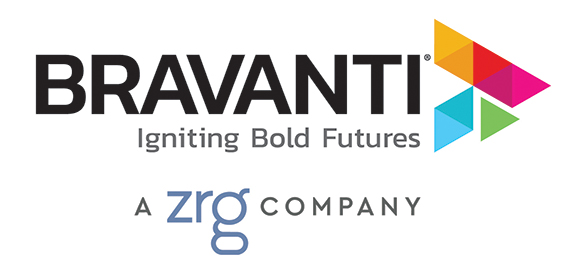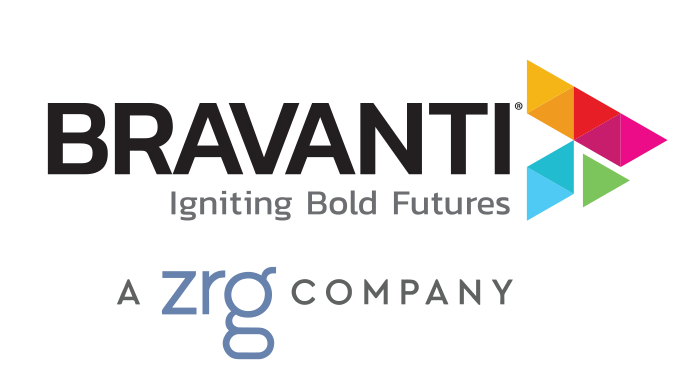Podcast: Play in new window | Download
It’s hard to find a company without some sort of diversity, equity, and inclusion initiatives these days but it’s not enough to outline some initiatives and write it into the company values. True diversity, equity, and inclusion comes from creating a culture that reflects those values at every level—an achievement that requires an executive-level commitment of time, budget, and resources.
Jill Flynn, Managing Director, Leadership Acceleration, for Bravanti, sits down with Tanya S. Blackmon, EVP & Chief Diversity, Inclusion, and Equity Officer at Novant Health to discuss how Tanya has led the charge to create a culture of diversity, equity, and inclusion at Novant Health.
Transcript: Creating A Culture of Diversity, Equity, and Inclusion
Jill Flynn: Good afternoon and welcome to the Taking the Lead Shortcast. A podcast where we talk with top business leaders about the challenges and opportunities that they are facing in today’s business world. I’m your host, Jill Flynn. I’m a managing director of the Leadership Acceleration Practice at Bravanti. Today, I’ll be speaking with Tanya S. Blackmon.
Tanya is one of my favorite clients and is the Executive Vice President of Diversity, Inclusion, and Equity at Novant Health. The reason that I wanted to introduce you to Tanya is because what she has done as the diversity, equity, and inclusion officer is truly outstanding, really viewed as best in class. Greetings, Tanya. So glad you’re here.
Tanya S. Blackmon: Thank you so much for having me this afternoon. I love to talk about diversity, inclusion, and equity, and I love talking to you, so this is a perfect match today.
Jill Flynn: It is. Well, I want to start going back a few years. You and I have known each other a pretty long time. A few years ago, you were president at one of the Novant hospitals and doing great. You called me up and told me that the CEO, Carl Armato, had tapped you to become Head of Diversity, Inclusion, and Equity for Novant. Why do you think the CEO wanted you in that role? Why did he put that role on his executive leadership team?
Tanya S. Blackmon: Yeah, you’re right, Jill. I remember that conversation, and I was surprised. That’s why I called to talk to you about it. I wasn’t really sure about this role. When Carl said that to me, I had to really think about it. It’s an interesting position to be in; that the CEO taps you for something, and then you aren’t really sure if this is what you want to do or what it really means. I was a Senior VP at that time when he tapped me on the shoulders. He said, “I really want you to do this, Tanya. I really want you to operationalize our core value of diversity and inclusion.”
It was really important for me, Jill, to understand why. Why did he want me to do this role? In my head, I was thinking if I take this position, people are going to say, “Oh, she got the position because she’s an African-American female.” Well, I am an African-American female. That wasn’t why. He and I talked for a long time about the why. There were three real reasons why he wanted me to do this role. One is that he knew my background of being a social worker and that I had a real understanding of the people side of healthcare. Then, he knew that I had run, successfully, two hospitals for Novant Health. He said, “You have a real understanding of the business and the operation side of healthcare, and we need to have those things together.”
The other thing that we talked about was my ability to adapt to change. I’m the daughter of a Marine. I had learned over my life and career how to accept change, adapt to it, and roll with the punches in healthcare. Then, he said, “I really want you to do what you’ve done for the people where you worked in your hospitals and operationalize our core value of diversity and inclusion.” He said that I want this to be a strategic lever for Novant Health, and I believe you’re the person to do it.
After talking to him, I thought, “Well, I love a challenge.” It sounds like a good challenge. About a year after being in the role, I was promoted to executive vice president. He promoted me because he believed that the position needed to be reporting to him and at the table. He said that if you’re at the table, then we can really leverage your voice and leverage your influence in this organization to push us to make the changes that we need to make in Novant Health.
Jill Flynn: When you started, I remember talking to you, and you said, “Oh, I’m doing a listening tour.” That was the first thing that you did in the role. I thought, what in the world is she doing? Tell us about what is a listening tour and why did you start that way?
Tanya S. Blackmon: A listening tour was pivotal to the work that we have done in Novant Health, but it comes from my social work roots where you actually start where the client is. Even though I’ve been with Novant Health for over 20 years, I really didn’t know where everyone was in the organization as it related to our core value of diversity inclusion. We’ve added equity, but diversity and inclusion.
The goal of the listening tour was to really glean insights from many voices in the organization about Novant Health’s core value of diversity and inclusion and the culture that we had around that core value. The feedback really helped us to understand what people were thinking. It helped us to develop a strategic plan, which has been foundational for embedding diversity inclusion in our company. We want it to be really an inclusive organization and have an inclusive culture. We wanted to be a leader, an industry leader, in being able to do that, where we truly leverage the talents, perspective skills of everyone. Because Carl knew that if we could leverage everyone’s talents, we could truly take our mission and vision to another level.
Jill Flynn: You’ve done so many things that I would call differentiators. Just mention a couple of those. What would you say you’ve done that’s really different?
Tanya S. Blackmon: One was the listening tour. A lot of people don’t do that. But the other is that we approached embedding diversity, inclusion, and equity as a culture change strategy. We have interwoven diversity inclusion to lots of things across our organization: key business components, for example, and patient satisfaction, team member engagement, risk management, our quality institutes. Everything that we touch, we put a diversity, inclusion, and health equity lens on that. We have an ROI in terms of diversity, inclusion, and equity. I hear about a lot of organizations using diversity metrics to look at their workforce. We are looking at something related to our workforce. We have an aspirational goal, but we really started with inclusion. The other thing that I think is a differentiator is that the effectiveness of our work is actually monitored by the board of trustees. It is on every agenda for our boards. That has been, I think, a differentiator and has helped us to truly advance the work.
Jill Flynn: You all have gotten some recognition nationally. You want to mention any of that?
Tanya S. Blackmon: As we started embarking on this journey, our goal was not to get awards. Our goal was to truly live out our core value and our mission in the organization. If we got recognized for that, that was great, but that was not the goal. But, our board of trustees has been recognized by the National Association of Corporate Directors for being number one innovators in advancing diversity and inclusion. The Centers for Medicare and Medicaid gave us the inaugural award for closing the gaps in healthcare disparities. Forbes magazine, Diversity MBA, all have given us awards. Through the human rights campaign, the health equality index, we’ve been recognized four times as leaders in LGBTQ healthcare equality. We’ve been recognized for our work in disability inclusion for our veterans as well. For us, it’s been so important that we are recognized in all dimensions of diversity and inclusion.
Jill Flynn: Well, listen, congratulations to you and your team members and to Carl and the executive team. You all remain an outstanding, really a beacon for other companies to emulate. Again, Tanya, thank you so much for joining us today.
Tanya S. Blackmon: Thank you, Jill, for having me. I’ve enjoyed it.
Outro: Taking the Lead is a production of BPI group and the views expressed are those of the host and guests. For more information, please visit BPI-group.us. Music for this podcast is courtesy of Jazzhar.
Diversity, Equity, and Inclusion Services at Bravanti
For information on how our Leadership Acceleration Practices helps organizations to build cultures of diversity, equity, and inclusion, visit our Diversity, Equity, and Inclusion services page.
Related Content on Diversity, Equity, and Inclusion
The Impact of Diverse, Equitable, & Inclusive Leadership
Increasing Retention, Engagement & Advancement of Leaders Within Underrepresented Groups
Personal Power and the Confidence Gap: Women, Stop Hijacking Your Credibility and Impact

